How to Make Gluten Free Pie Crust (With VIDEO!)
This post may contain affiliate links. Please read our disclosure policy
How to Make Gluten Free Pie Crust (WITH VIDEO!) – A step-by-step tutorial for making gorgeous, flaky gluten free pie crust! Scroll down for the FULL RECIPE & HOW TO VIDEO! (Gluten free, vegan friendly)
True story friends: I didn’t eat pie for over a year and a half. Why? Nothing self-righteous, nothing against pie… I was just afraid.
I’d been a super confident baker before, but after we changed our diet to gluten free, I was *really* intimidated by most gluten free baking. Gluten free baking can get expensive (especially if you make a lot of mistakes!), and I let myself be afraid. So, I didn’t eat pie. Because I was too scared to try (and waste ingredients). SO DUMB.
But NO MORE! It’s been many years now since we’ve mastered gluten free pie crust, and life is–quite literally–so much sweeter. If you’ve been afraid, fear no more! Here’s how I make delicious, flaky, easy, consistent gluten free pie crust…
Why We Love This Gluten Free Pie Crust Recipe:
The Flaky Texture! I’m looking for light, flaky crust and this recipe DELIVERS. Whether you make it with shortening (like I do) or butter (like so many of you have), you’ll end up with light, flaky crust that’s great on sweet or savory pies.
It’s Pretty Darn Easy. Whether you’re a long-time gluten free baker, a total newbie or simply cooking for a friend or family member who’s gluten free, this is one of those recipes that gives consistent results, even if you don’t have a ton of experience. And, you only need one kind of flour!
This Crust Works for Warm or Cold Pies – We’ve used this crust for LOTS of different pies over the years and it works for all of them. For instance….
- Triple Berry Crumble Pie (Gluten Free, Vegan)
- The Best Cherry Pie (Gluten Free, Vegan Friendly)
- Apple Crumble Pie (Gluten Free, Vegan Friendly)
- Pecan (Gluten Free, Vegan Friendly)
- Pumpkin Pie (Gluten Free)
- Chocolate Cream (We use this vegan chocolate pudding recipe for the filling–it’s amazing!)
It’s Vegan Friendly. We use organic non-hydrogenated vegetable shortening for this recipe, so it’s naturally vegetarian and dairy free. To make it vegan, simply sub in agave for the honey. It’s that easy! Here’s how you make it…
How to Make Gluten Free Pie Crust (Step-By-Step)
1. Gather Your Ingredients:
You’ll need shortening (I like this one–it’s non-hydrogenated), a 1-to-1 gluten free baking flour blend (we like this one), salt, honey, and water (not pictured yet). You can use butter in place of shortening–see my notes below for more information.

2. Blend 1 cup shortening into 2 cups flour.
Blend shortening into your flour, using a food processor (see video–my preferred method) or in a large bowl, using a pastry blender. You’ll want to keep blending until it’s very fine and the mixture starts coming together. Add salt and honey to the shortening/flour mixture and stir or pulse to combine.
Note: if you are using butter, stop blending when the flour/butter mixture is pea-sized, which will help keep your butter cold. If you’re using shortening, you’ll keep blending until the mixture starts to come together.
3. Make & Add Your Slurry.
A “slurry” is a flour/water mixture that can be used to thicken something. Here, it’s used to help bind the mixture together. Mix your slurry by combining 1/2 cup water and 1/3 cup flour mixture in a small bowl. Pour the slurry over everything and toss with a large fork until the mixture is one cohesive ball.

4. Divide & Chill.
Divide the dough in half. Flatten each half into a little disc and wrap in plastic wrap. Refrigerate 20-30 minutes, or until mostly chilled.
NOTE: if you only need one crust for your pie recipe, place the second wrapped disc of dough into a freezer-safe zip top bag and freeze it for up to 3 months.
5. Roll out the crust.
Lay one piece of parchment paper down on the counter or work surface you’ll be using. Unwrap one disc of dough and place on the parchment. Cover with a second piece of parchment. Roll out to a 9 1/2-10″ circle, working from the center outward in all directions. (It doesn’t have to be perfect!).
NOTE: If the dough is cracking quite a bit, it’s just a bit too cold. Give it 2-3 minutes to warm up a bit, then try again.
 6. Transfer to the pie plate.
6. Transfer to the pie plate.
Remove the top piece of parchment, and lay the open side down into your pie plate. Gently and slowly, peel back the second piece of parchment, then pat the dough down into the pie plate. If the dough has any cracks in it, use your fingers as needed to patch up any seams.
 7. Patch and Decorate.
7. Patch and Decorate.
Even out the edges by either trimming them or folding any extra dough under. Then, crimp with your fingers (see the video for how I do this), or press down the edges with a fork.
Fill with your desired filling, and bake as usual. If you notice the edges browning at any point, you can tent them with foil.
And That’s It!
Notes on This Gluten Free Pie Crust Recipe:
This is a shortening-containing recipe. Before you grab pitchforks, keep reading. These days, I use Spectrum brand or Nutiva brand because they’re organic, non-hydrogenated, well-sourced, and the best shortening choices I’ve been able to find. I pick them up at Amazon, Target, or Sprouts. It’s certainly not a health food, but it’s easy to work with. I also think if I eat shortening on 1-2 holidays in the year, I’m probably not going to die.
If you want to try it with butter, it will work. Many of you have made this crust with butter over the years with great results! Now that we need to eat dairy free, butter’s not a choice for us, but it’s GREAT in pie crust if you tolerate it. The big trick is keeping your butter very cold. You’ll just want to dice it into tiny cubes, make sure they’re good and cold before combining them with the flour mixture, and then be sure to use very cold water for the slurry. Also, when combining the butter into the flour during the initial step, you’ll stop when the pieces are pea-sized rather than when it’s smooth and totally combined. (Again, you can do this in a food processor)
Our Favorite Flour Blend: We use a 1-to-1 gluten free flour blend, which works as a cup-for-cup substitution for white flour in most baking recipes (cookies, muffins, cakes, etc.). We mostly use Bob’s Red Mill’s blend because it gives such consistent results. It’s also pretty easy to track down. I order in bulk from Amazon or Thrive Market, or pick it up at Sprouts, Kroger, Safeway, or even Target or Wal-Mart.
Only Need One Crust? This gluten free pie crust recipe makes a double crust (top and bottom). If you only need one for your pie, place the second wrapped disc of dough into a freezer-safe zip top bag and freeze it for up to 3 months. Let it thaw in the refrigerator, then place it on the counter for 30-40 minutes until it’s soft enough to roll out.
PS – More Gluten Free Desserts to Love:
Print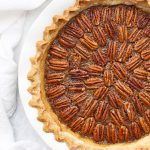
Gluten Free Pie Crust (Vegan Friendly)
- Total Time: 40 minutes
- Yield: 1 double pie crust 1x
Description
How to Make Gluten Free Pie Crust – My nearly fool-proof method for flaky, gluten free crust every time. (Gluten free, vegan friendly)
Ingredients
- 2 cups Bob’s Red Mill 1-to-1 Gluten Free Flour Blend
- 1 cup Spectrum shortening
- 1 Tbsp honey (or agave, for vegan)
- 1 tsp salt
For the slurry:
- 1/3 cup flour blend
- 1/2 cup water
Instructions
- Blend 1 cup shortening into 2 cups flour, using a pastry blender (seen in the photos) or a food processor (seen in the video). You’ll want to keep blending or pulsing until it’s very fine and the mixture starts coming together. Add salt and honey to the shortening/flour mixture.
- NOTE: if using butter, stop blending/pulsing when your flour & butter mixture is pea-sized to help keep the butter cold. If using shortening, keep blending or pulsing till the mixture comes completely together.
- In a small bowl, mix together a slurry by combining 1/2 cup water and 1/3 cup flour mixture. Whisk or stir until smooth and no lumps remain. Pour the slurry over your dough and toss with a large fork until the mixture is one cohesive ball. Dough will be wet.
- Use a tiny amount of flour to dust your countertop or work surface and turn dough out onto the counter. Sprinkle a tiny dusting of flour over the top of the dough ball (just enough so that it doesn’t stick terribly to your hands), and shape the dough into a ball or disc.
- Divide the dough in half. Flatten each half into a small disc and wrap in plastic wrap.
- Refrigerate 20-30 minutes, or until mostly chilled, but still slightly pliable.
- Note: if you only need one crust for your pie recipe, place the second wrapped disc of dough into a freezer-safe zip top bag and freeze it for up to 3 months.
- Roll out the dough between to sheets of parchment by laying one piece of parchment paper down on the counter or work surface you’ll be using. Unwrap one disc of dough and place on the parchment. Cover with a second piece of parchment.
- Starting at the center of the dough and moving outward in all directions, use a rolling pin to roll out the dough to a 9 1/2-10″ circle (it doesn’t have to be perfect). If the dough is cracking quite a bit, it’s just a bit too cold. Give it 2-3 minutes to warm up a bit then try again.
- Remove the top piece of parchment and lay the open side down into your pie plate. Gently and slowly, peel back the second piece of parchment, then pat the dough down into the pie plate. If the dough has any cracks in it, use your fingers as needed to patch up any seams.
- Even out the edges by either trimming or folding any extra dough under. Then crimp with your fingers as shown, or press down the edges with a fork. Fill with your desired filling, and bake as usual. If you notice the edges browning at any point, you can tent them with foil (this hasn’t been a big issue for me.
To bake with a filling:
- Just follow your pie filling recipe directions. If your cherry pie bakes for 45 minutes, bake it 45 minutes. If your apple pie bakes for 50 minutes, bake it 50 minutes. This has worked for me for apple, berry, pecan, and pumpkin pies without any problem.
If you are baking it alone to fill with a cream filling later:
- If you are baking the crust alone to fill with a cold cream later, you can bake it at 375 degrees for about 30 minutes, or until it’s just starting to color around the edges and it’s completely set. Don’t forget to prick the bottom a few times with a fork (or use pie weights) to prevent the bottom from puffing up too much. Also be sure to let it cool completely before adding your filling.
- Prep Time: 10 minutes
- Category: Dessert, Pie
- Method: Oven, Baking
- Cuisine: American


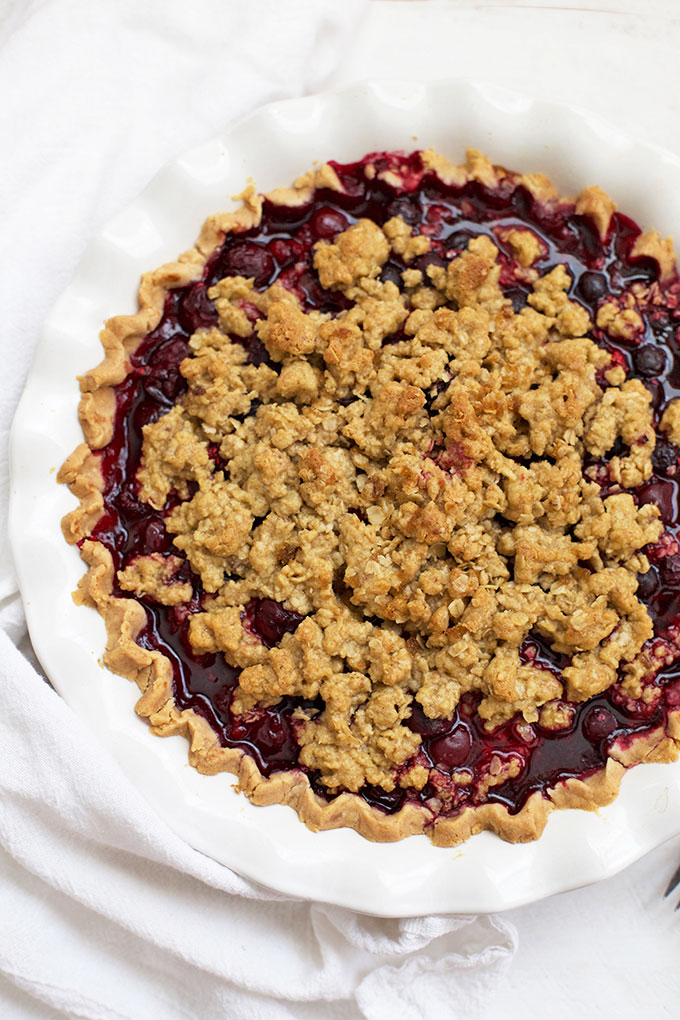


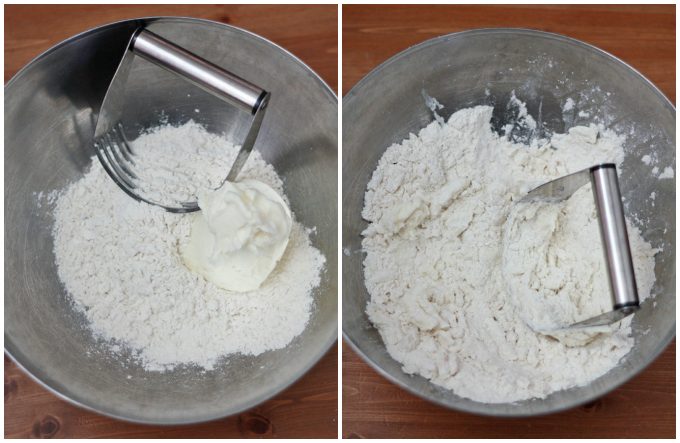
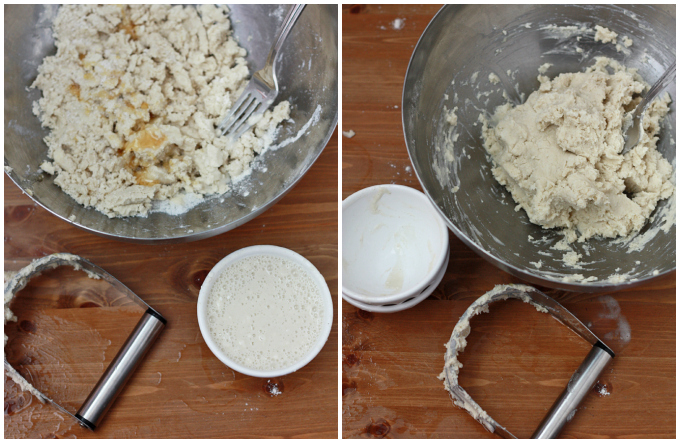
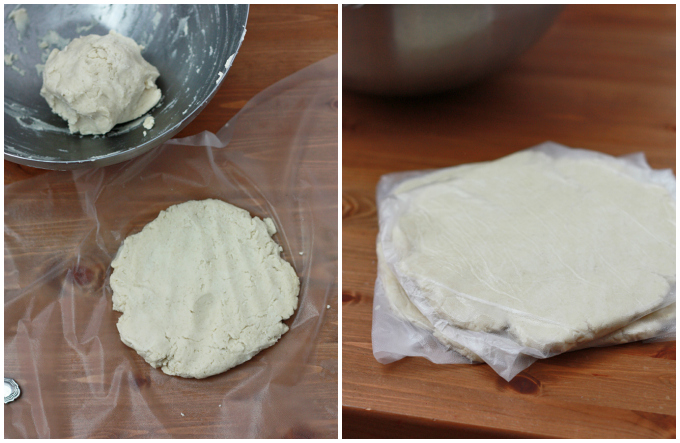
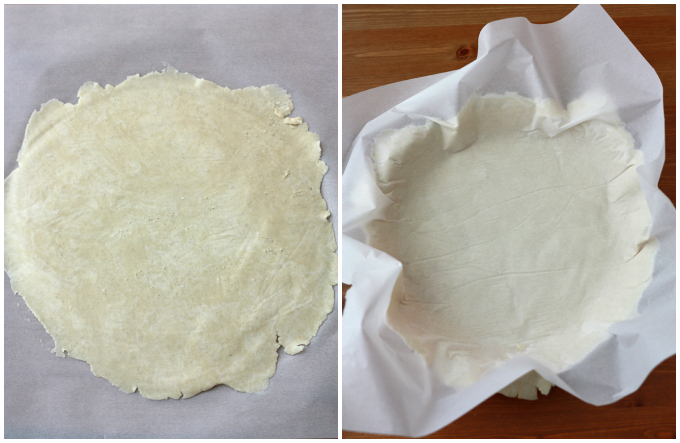

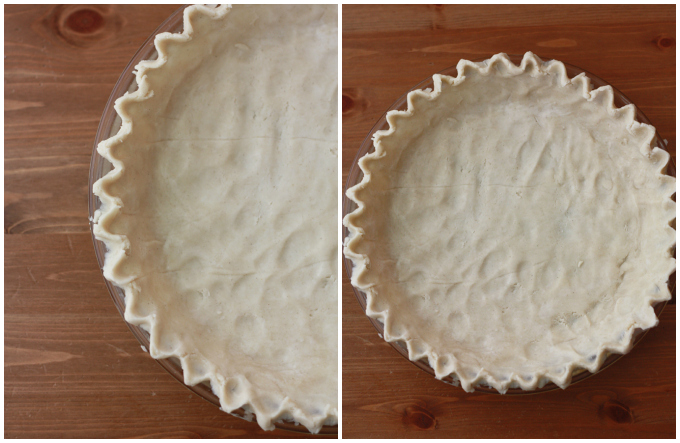
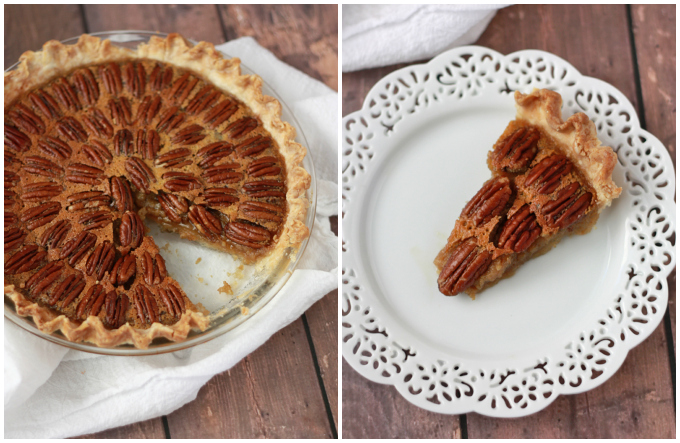
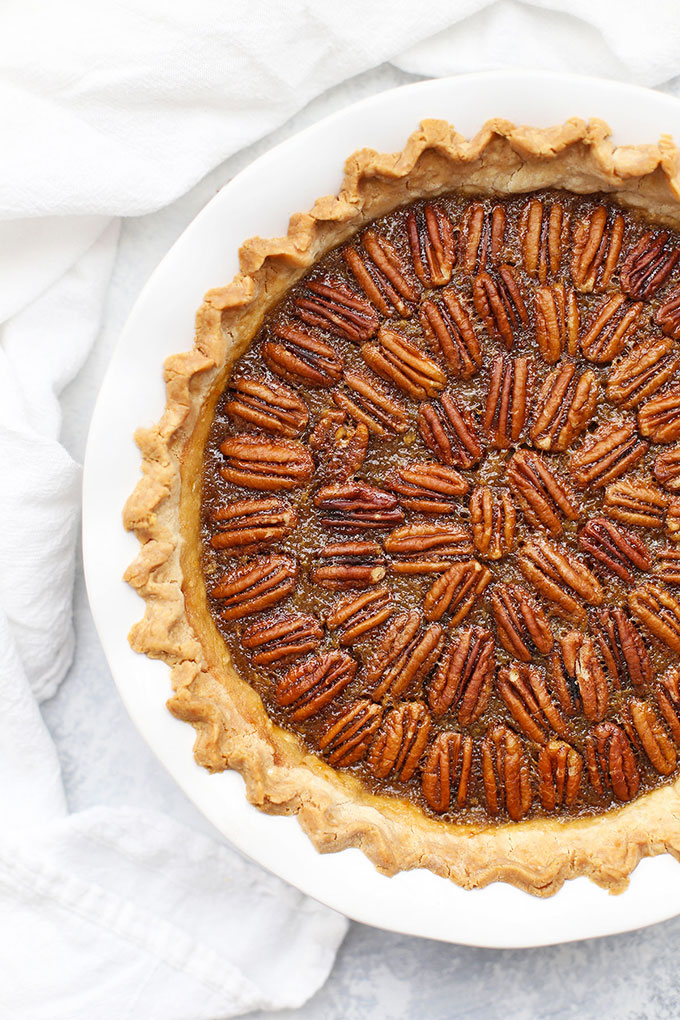

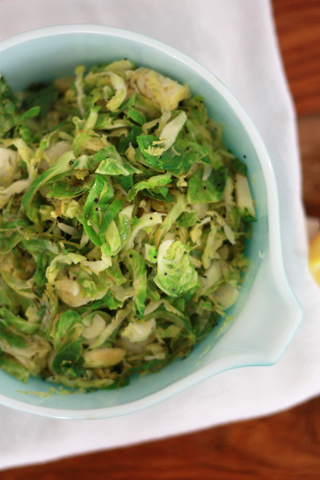
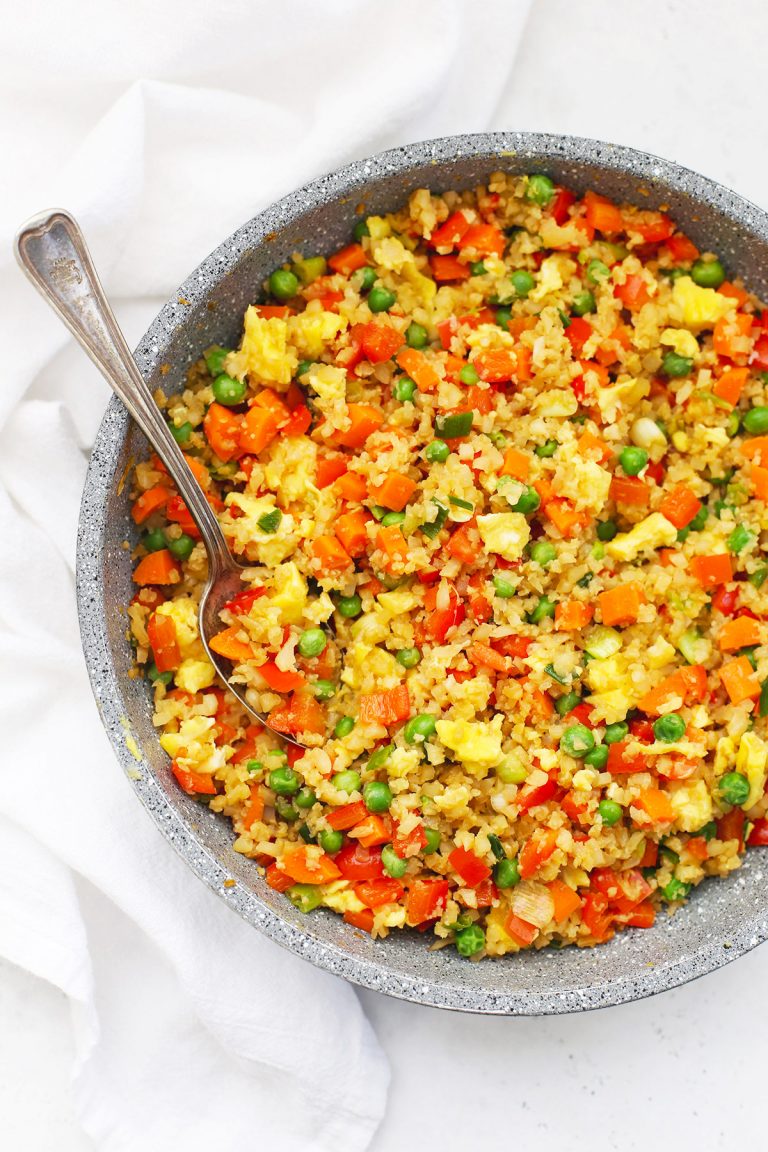
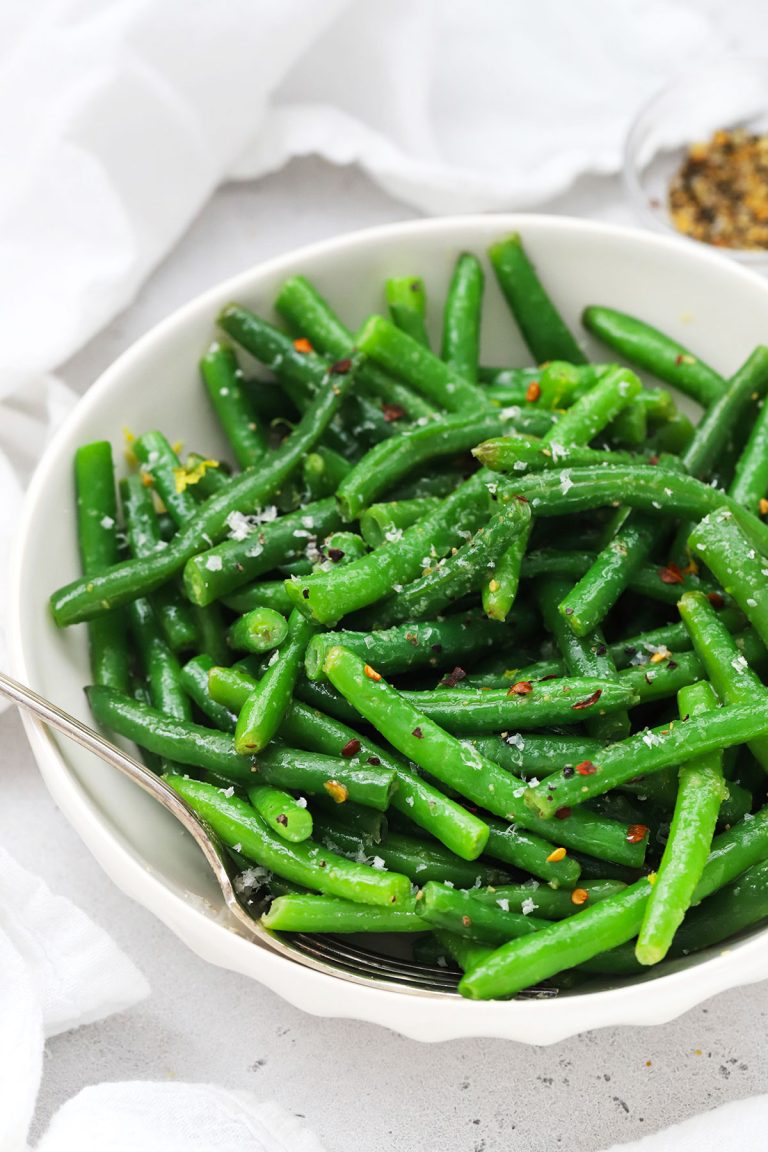
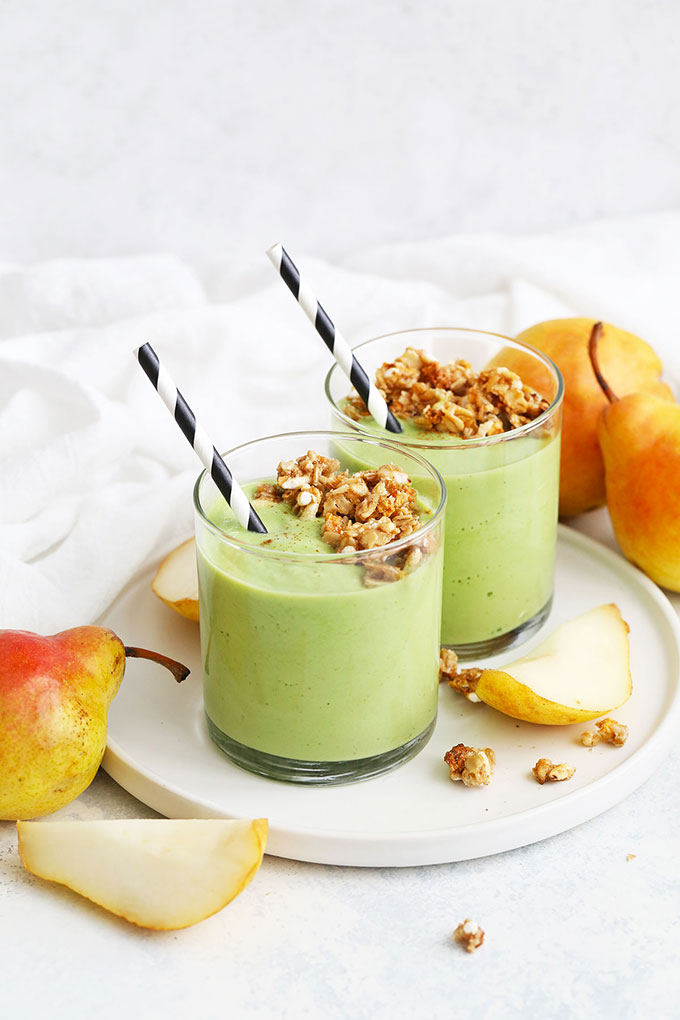
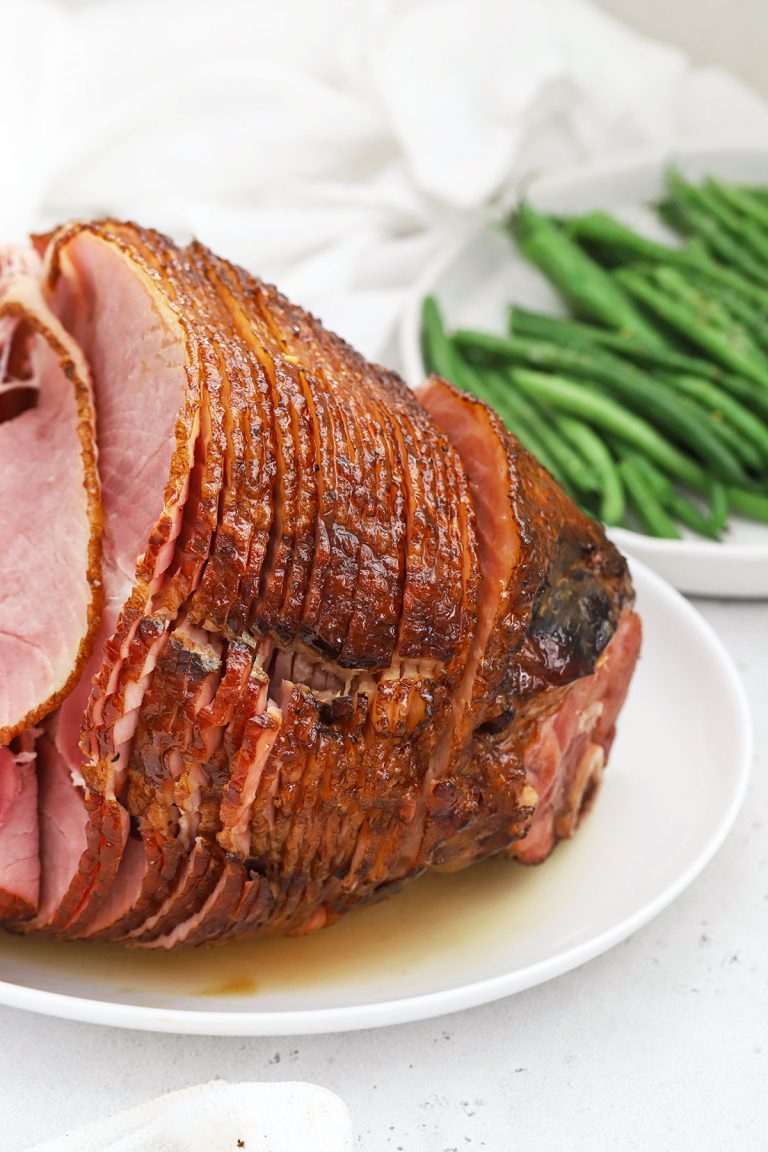
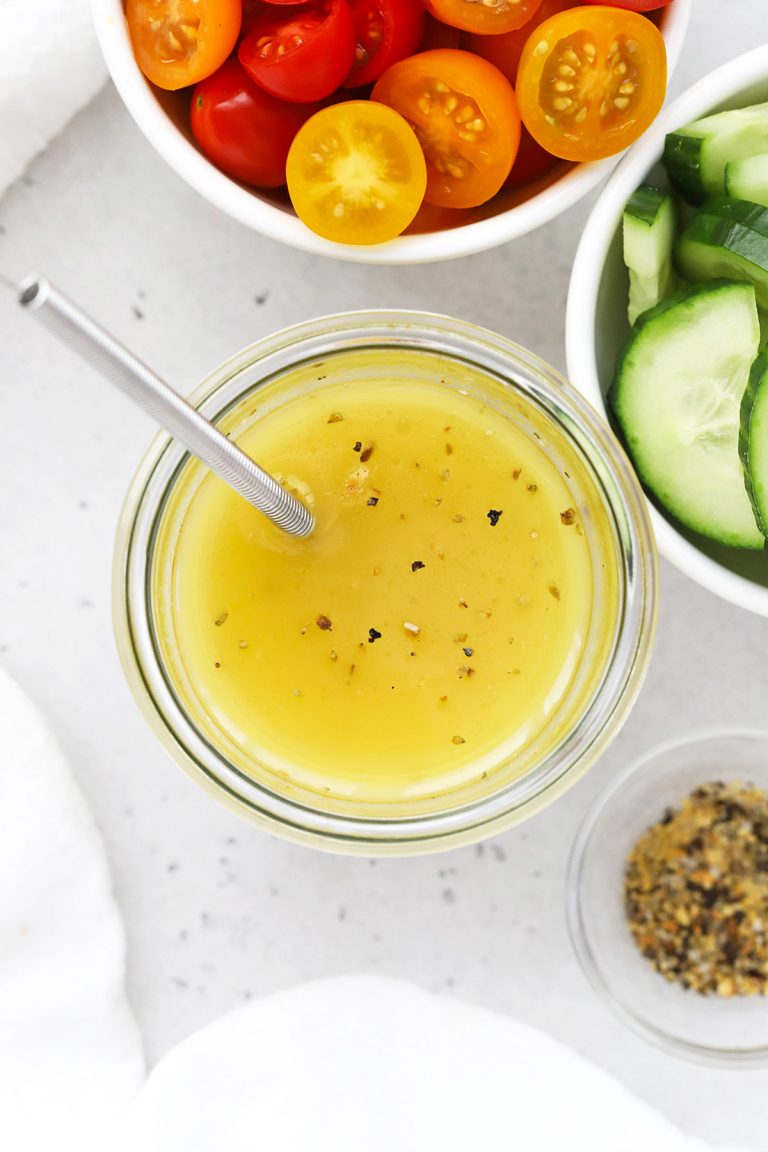
THANK YOU!!
I have been gluten free (medical necessity) for almost 30 years. I have made bad stuff and good stuff, but pie crust was always just not right, even though I tested many different recipes. Like you I had given up on pie! But this crust is close enough to “real” that most of my extended family can’t tell. Your recipe has been in my notebook for some time and when I got it out today to make crust for chicken pot pie, I almost cried when I found my shortening was rancid (it got too warm.) I came back to your website to see if you had any notes about using butter and was happy to find the answer is yes. I’m anxious about the difference in moisture content but willing to give it a try. Thanks again for great stuff!!!
Esther – I’m so glad this pie crust recipe has been a winner for you! I hope the butter crust turned out okay for last night’s dinner. Many people have made and loved it with butter over the years–I hope you did, too!
Over the last 2 years I’ve made at least a dozen of pie crusts using this recipe.
Using a slurry is clever and I think its what makes the difference between this and all the other GF pie crusts I’ve attempted. I do use the Spectrum organic palm oil rather and it turns out wonderful each time. The dough is manageable and if it cracks or crumbles, I simple squish it into place in the pie pan.
Thank you!
I’m SO glad you love it Kathy! Happy Thanksgiving!